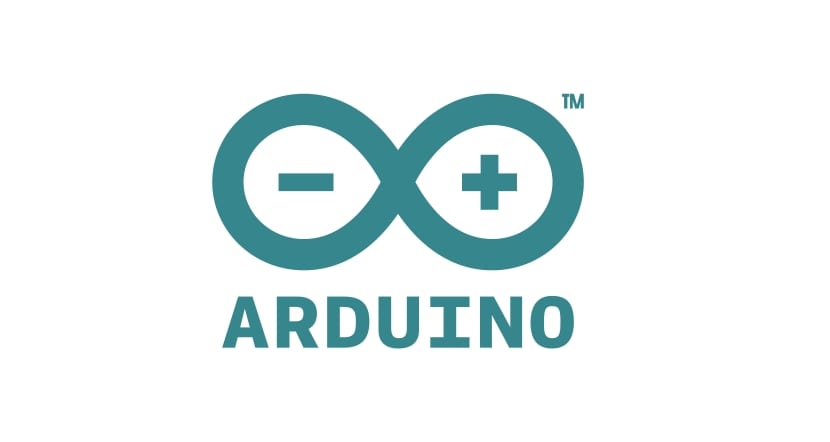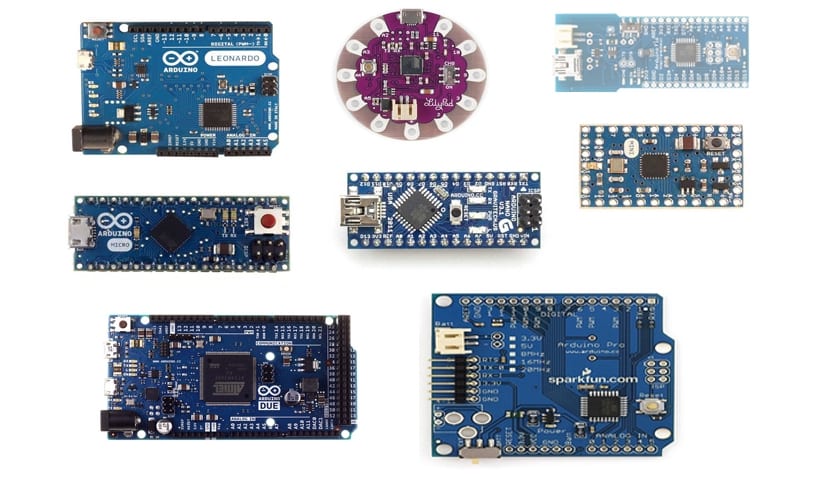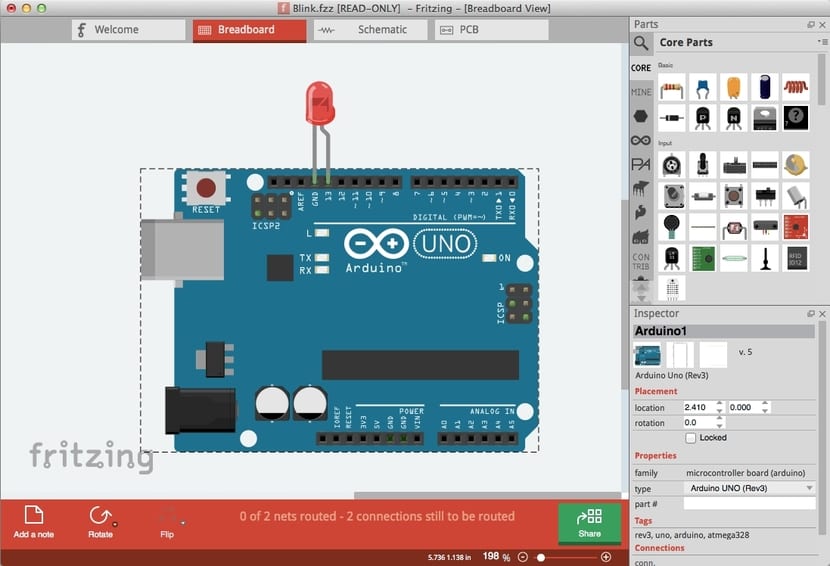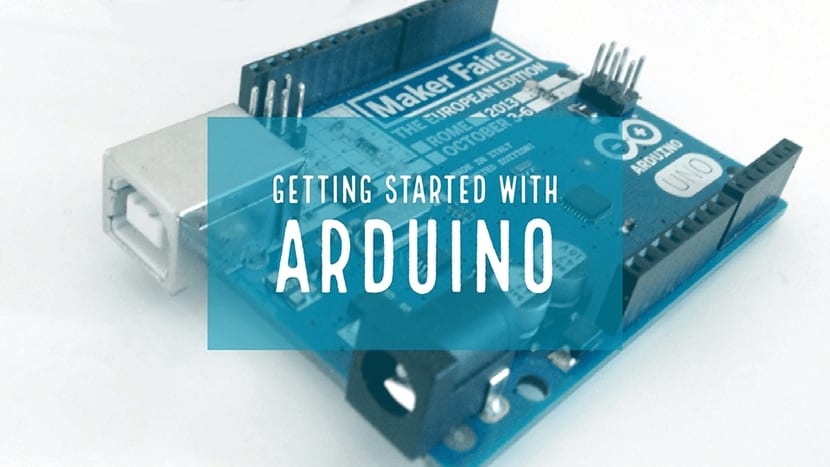
Arduino It is probably one of the software projects or platforms and hardware libre that has had the most success and the one that has had the most impact in the DIY world. The community has created both open source software for programming the microcontroller of the boards, as well as different free hardware boards to work with. All licensed under the GNU GPL license so that a multitude of complements and derivatives can also be created.
In fact, they have awakened an entire electronics industry with a multitude of accessories, hats or shields With which you can extend the capabilities of your Arduino board beyond its basic functionalities that it implements as standard. Many kits have also been launched with which to start or carry out very specific projects, such as kits for robotics, kits for projects with solar energy, starter kits, etc.
What types of plates are there?
There are various official Arduino boards, although to start I recommend using Arduino UNO, which is the one I use as the basis for the tutorial. The various plates that stand out the most are:
- Arduino UNO rev3: it is the most flexible and used plate of all, the recommended one to start with. It has a 328Mhz ATmega16 microcontroller, 2KB of SRAM and 32KB of flash, 14 digital I / O pins and 6 analog inputs.
- Arduino Due: It has an AT91SAM3X8E microcontroller with 84 Mhz, 96KB of SRAM, and 512 KB of flash, so you will be able to record more complex programs for larger projects. Likewise, you will find 54 digital I / O connections and 12 analog inputs + 2 analog outputs.
- Arduino Mega: ATmega2560 16Mhz microcontroller, 8KB of SRAM, 256KB of flash, 54 digital I / O pins and 16 analog inputs. In other words, it would be an intermediate model between Due and UNO, for projects of intermediate complexity.
- Arduino Lily pad: Small and round plate that is flexible for your e-textile projects, that is, a wearable that you can put on clothes. It is labable.
- Arduino Micro: It is a very small board with a microcontroller that can be useful when space is a key factor and you need a board that takes up little space to insert it within a small space. There is a Pro version of it with enhanced capabilities. It includes a 32Mhz ATmega4U16 microcontroller, and 20 I / O pins that you will have to solder.
- Arduino Nano: it is an even smaller board than the Micro, but with similar features and price, with an ATmega328 microcontroller.
- Arduino Explore: It is a little more expensive than most of the previous ones, it is based on the primitive Leonardo, with similar capacities to the UNO and which was the first plate that appeared. But its design has been renewed, reduced and differs in that some buttons, mini joystick, and sensors have been integrated directly on the board. Therefore, it is interesting for gaming projects.
You will also find unofficial plates, created by the community or by other companies. Their characteristics can be very similar, and even compatible with Arduino in terms of programming or electronic level, but we already leave that as an alternative of your choice. I do not recommend that you start with these derivative boards in any way, because there could be some incompatible things and you will not find as much help. Also, some of them are very specific for robotics, drones, etc.
On the other hand, you have the electronic accessories that will provide your Arduino board with extra capabilities, such as WiFi connectivity, Bluetooth, drivers to control motors, etc. Some of the best known shields are:
- Wi-Fi Shield: to add WiFi connectivity and to be able to connect your project to the Internet to manage it remotely.
- GSM Shield: for mobile data connectivity.
- Ethernet Shield: wired connection to the network.
- Shield Proto: allows you to use a breadboard for your designs.
- And a lot traditional, such as screens, keyboards, ...
In principle, for start, I don't think you might be interested in this type of element, although you will probably need it later.
What do I need to get started?
To start, I advise you to acquire the following material:
- Arduino Starter Kit: it is a complete starter kit containing a plate Arduino UNO, a very complete manual and a multitude of various electronic elements to work with (resistors, capacitors, LED screens, displays, breadboard, LEDs, cables, diodes, transistors, buzzers, motors and servomotors, drivers, etc.).
- If you choose to buy one of the plates mentioned above, keep in mind that you will have to acquire the electric material necessary for each project on your own in specialized stores… It is also possible that once you have exploited the starter kit, you are interested in buying more material to continue expanding your projects or doing things beyond what this kit allows you.
Beyond the physical, it would also be interesting if you have adequate software:
- Arduino IDE: you can download it for various platforms completely free of charge. In the PDF tutorial I explain how to install it on each operating system and how it works.
- Ardublock: is another plugin in Java for multiple platforms that can also be Discharged free. It allows you to work graphically, that is, using blocks similar to puzzle pieces to compose your programs without having to use programming language. All this is also explained in the PDF.
- Fritzing: is a program that allows you to carry out simulations or prototypes of your circuits before assembling them. It is very interesting and includes a multitude of elements among its device libraries. Download it here.
With that, you would have more than enough to start…
Arduino programming tutorial:
Although the platform has been working for years, there may be many young or not so young people who read us now and who want to join the great community of makers that exist creating projects based on Arduino at the moment. So, if you want to start learning to program from scratch and step by step, I offer you a free ebook on Arduino programming. With it you will learn everything you need to start building your first designs ...
What does the download file include?
Within the Download ZIP you will find several files to work with:
- eBook with tutorial Arduino IDE and Ardublock programming in PDF standard to be able to use it on your PC.
- eBook identical to the previous one, but of a smaller size and lightweight to use from your mobile devices.
- Download links with the program necessary.
- A folder with different sketch source files that you can try as examples or modify to learn. There is both code for the Arduino IDE as well as others for Ardublock and even some codes for working together with the Raspberry Pi.
Download Free eBook and add-ons:
Start the download here:
I hope it helps you and you start to be a maker with your first projects. You can leave comments with your first designs and share your creations with us.



Greetings Good Afternoon:
You needed to make a TESTER that takes two values of a Capacitor and a resistance in parallel to ground C = 470Mfx50V, R = 330k 1 / 4W, this is connected to the input and output 3.5 AUDIO Jack
Through a Question 3.5
question in arduino can you do something that measures and outputs values,
I am starting and I intend to achieve good results
Your Arduino EBOOK download does not work
Hello,
I just tried and it works for me. It is true that an ad comes out first.
But the second time you click the link it downloads.
All the best
The download starts and stops indicating: Error: Network error
Try on other computers, on other networks and the problem persists
Hello
I have downloaded it again right now and it works perfectly.
Hello, could you please check the link again? https://www.hwlibre.com/wp-content/uploads/2019/04/EBOOK-ARDUINO.zip
It gives network error when downloading.
Thank you very much.
Hello,
Ok, checked.
Estimados:
I was unable to download the Arduino eBook. Can you send it to me by mail, along with other materials to learn and use well?
Greetings.